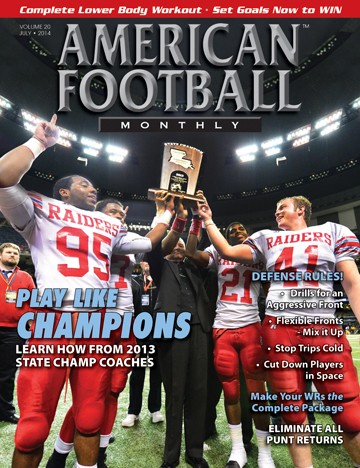Article CategoriesAFM Magazine
|
Fixed Front: Defending trips to the field and in the boundary with a stable pre-snap lookby: Kyle LanghoffDefensive Coordinator, MacMurray College © More from this issue With more and more offenses going to spread type schemes, we are seeing more trip formations. Not only do we want to be able to stop or control the trip formations but we need to be multiple and not be one-dimensional in our call options. To give you a quick idea of our defense, we do everything off field and boundary. Breaking down film, we found that around 80% of our plays last season were on a hash. That is a huge statistic and something that we feel we need to play against. In our defense, we align our players based off field and boundary, not strength of receivers or strength of formation. We are a defense that shows the same look pre-snap for the majority of the game. As a defense, we want to give the offense a “vanilla” look every time and not tip our hand. At the snap, we get to our zones or objectives. Our lineback....The full article can only be seen by subscribers.
|
|
|||||||
| HOME |
MAGAZINE |
SUBSCRIBE | ONLINE COLUMNISTS | COACHING VIDEOS |
Copyright 2025, AmericanFootballMonthly.com
All Rights Reserved





